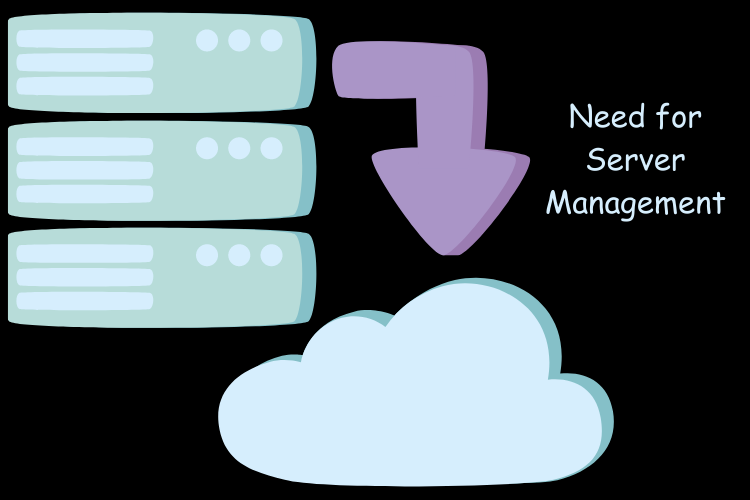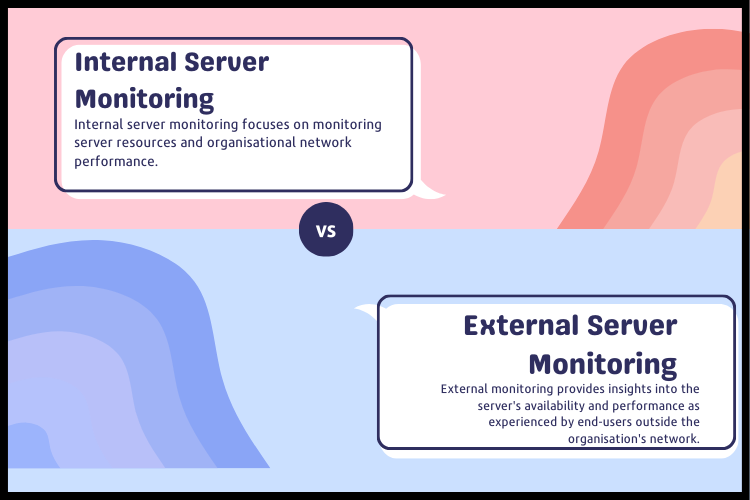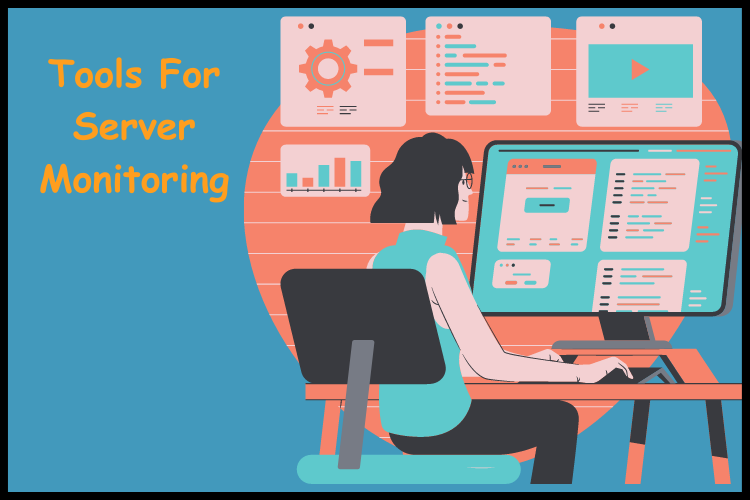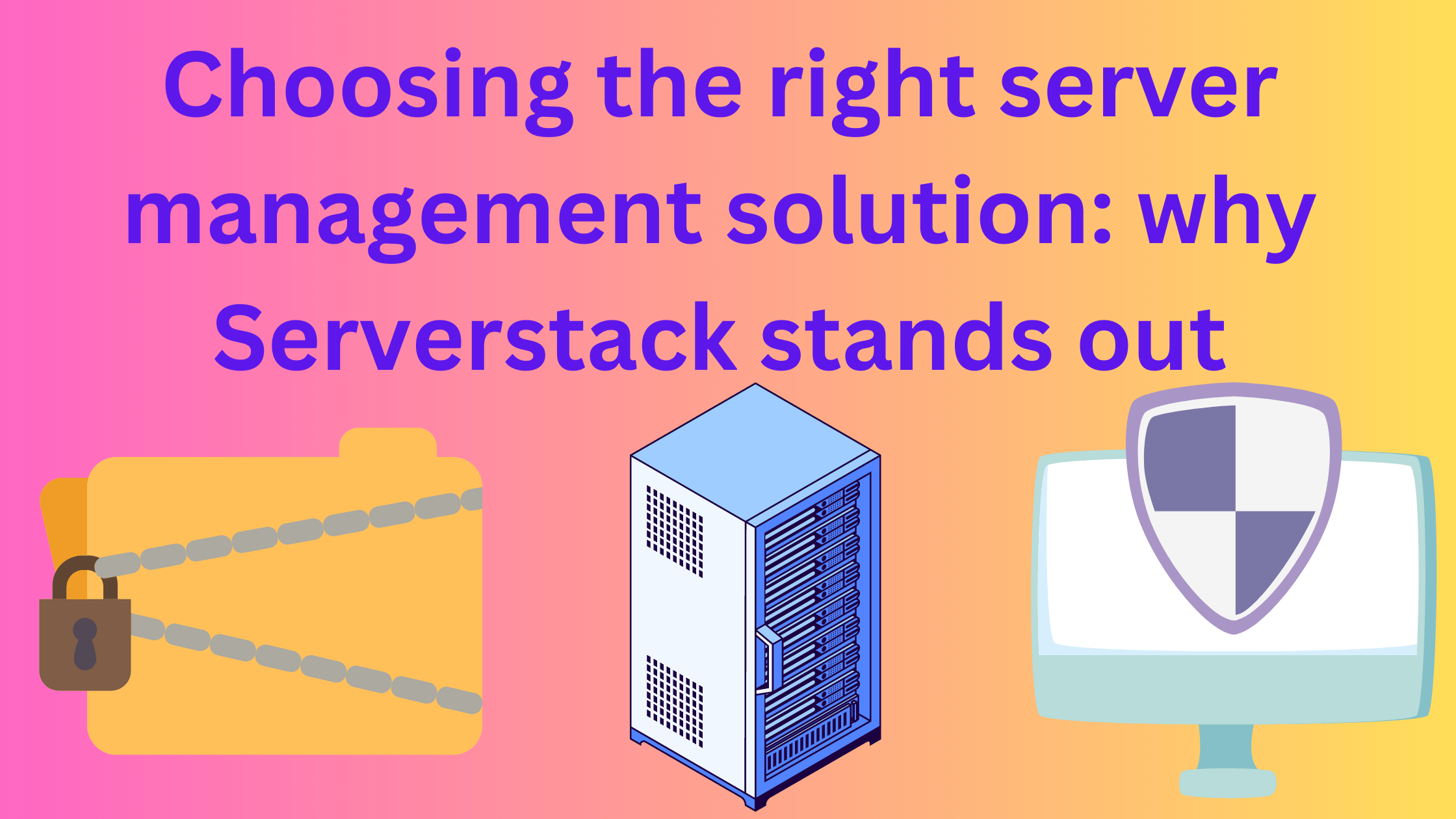Table of Contents
What is Server Management and How it works?
Server management is the process of ensuring that a company’s IT infrastructure remains up and running. This includes system administration, software updates, resource allocation, and network management. Data centers play a crucial role in server management as they house the physical servers that store and manage data.
A server administrator is responsible for ensuring the servers are running smoothly and resolving any issues promptly. Resource allocation involves distributing the server’s resources, such as CPU, memory, and disk space, among different applications and users. Network management ensures the server is connected and communicating with other devices. Overall, server management is critical to maintaining a company’s IT infrastructure and ensuring it runs efficiently.
What is the primary role of server management in an organization?
Server management is a critical aspect of any organisation’s it infrastructure. It involves the management of servers, including resource allocation, software management, security measures, and performance optimisation. Resource allocation is vital to server management, ensuring that the server’s resources are used efficiently. This includes cpu usage, memory usage, disk space, and network bandwidth.
Software management is another important aspect of server management. It involves managing the installation, configuration, and maintenance of software on the server. This includes operating systems, applications, and other software components.
Security measures are also a crucial aspect of server management. This involves implementing measures such as firewalls, antivirus software, and intrusion detection systems to protect the server from unauthorised access and malicious attacks.
Performance optimisation is the final aspect of server management. This involves monitoring the server’s performance and identifying areas that need improvement. This includes identifying and resolving performance bottlenecks, optimising server configurations, and improving network performance.
In conclusion, server management is essential to any organisation’s it infrastructure. It involves resource allocation, software management, security measures, and performance optimisation. Proper server management ensures that the server operates efficiently, securely, and reliably, which is crucial for the success of any organisation.
What are the key components of Server Management?
Server management is a crucial aspect of any organisation that relies on technology to run its operations. It involves various tasks that ensure the smooth running of servers and the applications that run on them. Critical components of server management include resource allocation, software management, security measures, and performance optimisation.
Resource allocation is an essential aspect of server management that ensures that available resources are distributed efficiently. This includes managing storage, memory, and CPU usage to ensure that all applications have the resources to run efficiently. Proper resource allocation helps to prevent downtime and improve server performance.
Software management is another crucial component of server management. It involves managing the software installed on the server, including updates, patches, and upgrades. This ensures that the server is running the latest software versions, which can improve performance and security.
Security measures are crucial in server management to protect against unauthorised access, data breaches, and other security threats. This includes firewalls, access controls, and encryption to safeguard sensitive data and prevent unauthorised access.
Performance optimisation is the final key component of server management. This involves monitoring and optimising the server’s performance to ensure it runs efficiently. This includes identifying and resolving bottlenecks, optimising resource allocation, and tuning the server to improve performance.
How Server Management Works?
Server management is the process of overseeing and maintaining the performance and security of a server. It involves various tasks, including resource allocation, software management, security measures, and performance optimisation.Performance optimisation is the final key component of server management. This involves monitoring and optimising the server’s performance to ensure it runs efficiently. This includes identifying and resolving bottlenecks, optimising resource allocation, and tuning the server to improve performance.
Resource allocation is a critical aspect of server management. It involves ensuring that the server has enough resources, such as CPU, memory, and storage, to meet the demands of its applications. Resource allocation also involves monitoring resource usage and adjusting resource allocation to prevent performance issues.
Software management is another critical aspect of server management. It involves ensuring that the software on the server is up-to-date and free of vulnerabilities. Software management also involves monitoring software usage and making adjustments as necessary to optimise performance.
Security measures are essential for server management. They involve implementing measures to protect the server from unauthorised access, data breaches, and other security threats. Firewalls, intrusion detection systems, and encryption are examples of security measures.
Performance optimization is another important aspect of server management. It involves monitoring server performance and making adjustments as necessary to improve performance. Performance optimization may involve adjusting resource allocation, fine-tuning software settings, and implementing other performance-enhancing measures.
What are the benefits of Server Management?
Server management is a crucial aspect of any it infrastructure. It involves managing the resources and services of a server to ensure its optimal performance, security, and availability. The benefits of server management are numerous, and they include resource allocation, software management, security measures, and performance optimisation.
Resource allocation is a crucial benefit of server management. By monitoring and managing the server’s resources, it professionals can ensure it always has enough resources to handle the workload. This means the server will run smoothly and efficiently without bottlenecks or slowdowns.
Software management is another essential benefit of server management. It professionals can use server management tools to install, configure, and update software on the server. This ensures the server runs the latest software with all the necessary patches and updates.
Finally, performance optimisation is a crucial benefit of server management. It professionals can use performance monitoring tools to identify and fix issues, ensuring the server runs at peak performance. This helps improve the user experience and lets the server handle the workload without problems.

What is the need for Server Management?
Server management is an essential aspect of any organisation’s IT infrastructure management. It ensures the servers run smoothly, managing disaster recovery, data protection, and patch management. Moreover, it also requires performance monitoring to ensure optimal system performance.
Neglecting server management can lead to costly downtime and security breaches, which can negatively impact the business. Therefore, it’s crucial to have a robust server management system to ensure the organisation’s IT infrastructure’s smooth functioning.
1. Ensuring System Stability
Ensuring System Stability is crucial for any organisation as it helps maintain smooth business operations. The stability of any system depends on various factors, and the four most essential ones among them are Data Protection, Patch Management, IT Infrastructure Management, and Performance Monitoring.
Data Protection is one of the most critical aspects of ensuring system stability. Organisations must have proper backup and recovery plans to protect their data from unforeseen circumstances. This includes implementing data encryption, password-protected access, and regular backups.
Patch Management is another crucial aspect of ensuring system stability. Regular software updates and patches must be installed to prevent any vulnerabilities that hackers can exploit. This ensures that the system is protected against any potential security threats.
IT Infrastructure Management is the backbone of any organisation’s system stability. Regular maintenance, upgrades, and hardware and software replacements are necessary to ensure the system runs efficiently.
Performance Monitoring is the final crucial aspect of ensuring system stability. Regular monitoring of the system’s performance helps identify potential issues before they become critical problems that can disrupt business operations.
2. Resource Optimisation
Resource optimisation is an essential aspect of efficient business operations. It involves maximising the use of available resources to achieve optimal results. One of the key areas where resource optimisation is critical is IT management. Effective IT management requires efficiently utilising resources such as Data Protection, Patch Management, IT Infrastructure Management, and Performance Monitoring.
Data protection is crucial in resource optimisation as data is one of the most valuable assets of any organisation. Companies must protect their data against loss, theft, or unauthorised access. Patch management is another critical area for resource optimisation. Regular patching of software and applications helps to prevent system vulnerabilities and cyber-attacks.
IT Infrastructure Management is also essential in resource optimisation. Managing IT infrastructure effectively ensures that resources such as hardware and software are used optimally, leading to improved productivity and reduced costs. Performance Monitoring is equally essential in resource optimisation as it enables IT teams to identify and resolve performance issues promptly.
3. Security Vulnerabilities
Security vulnerabilities are a significant concern for any organisation. Businesses must be more careful than ever to safeguard their data due to the frequency and severity of cyberattacks. Many types of vulnerabilities can expose organisations, but some of the most common include data protection, patch management, IT infrastructure management, and performance monitoring.
Data protection is crucial for any organisation that deals with sensitive information.This comprises everything information, from consumer information to financial records. Any vulnerability in data protection can lead to severe consequences, including data breaches and theft. Patch management is another essential security aspect, as outdated software can leave organisations vulnerable to attack.
IT infrastructure management is also critical for security, as misconfigured networks and systems can make it easier for hackers to access sensitive data. Finally, performance monitoring is essential for detecting and responding to security threats in real time.
Overall, organisations must take a multi-faceted approach to security to protect themselves from vulnerabilities. This includes everything from implementing robust data protection protocols to ensuring that IT infrastructure is maintained and monitored continuously.
4. Data Protection
Data Protection is a crucial aspect of any business that deals with sensitive information. It involves implementing various measures to safeguard data from theft, loss, or unauthorised access. Patch Management, IT Infrastructure Management, and Performance Monitoring are critical components of Data Protection.
Patch Management involves updating software and applications to fix any vulnerabilities that hackers may exploit. Regular patching ensures that the software is up-to-date and secure. On the other hand, IT Infrastructure Management involves managing the hardware, software, networks, and other IT resources to ensure optimal performance and security.
Performance Monitoring is also critical in Data Protection as it involves monitoring the performance of IT systems to detect any anomalies or security breaches. Through continuous monitoring, businesses can identify and respond to threats before they cause damage.
5. Scalability and Growth
Scalability and growth are crucial for any business to thrive and succeed in today’s competitive market. As your business grows, ensuring that your systems and processes can handle the increased demand becomes essential.Scalability enters the picture here.
To achieve scalability, you must have a robust IT infrastructure management system. This includes data protection, patch management, and performance monitoring. These critical components can help you manage and scale your business efficiently.
Data protection is crucial for any business. It ensures that your sensitive data is safe and secure. You need a reliable backup and recovery system to protect your data from any potential disasters.
Patch management is another essential component of IT infrastructure management. It involves regularly updating your software and systems to ensure they run smoothly and securely.
Performance monitoring helps you monitor and analyse the performance of your systems and processes. It lets you identify potential bottlenecks and make necessary adjustments to optimise your system’s performance.

What is the difference between Internal Server Monitoring and External Server Monitoring?
Internal and external server monitoring are two approaches used to monitor servers’ performance, availability, and security. While they share the goal of ensuring server stability, there are notable differences between them.
Internal server monitoring focuses on monitoring server resources and organisational network performance. It involves deploying monitoring tools and agents directly on the servers to collect real-time data on CPU usage, memory utilisation, disk space, and network traffic.
This approach provides granular visibility into server health and allows for quick detection and resolution of internal issues. Internal monitoring enables organisations to maintain data security and privacy by keeping all monitoring activities within their network perimeter.
On the other hand, external server monitoring involves monitoring servers from an external network or location. This is typically done using third-party monitoring services or tools that simulate user interactions and monitor server response times from various global locations.
External monitoring provides insights into the server’s availability and performance as experienced by end-users outside the organisation’s network. It helps identify potential network issues, DNS resolution problems, or regional performance variations that may impact user experience.
Internal server monitoring offers more control and confidentiality regarding data security and privacy. By monitoring activities within the organisation’s network, sensitive data remains protected and is not transmitted externally. However, external server monitoring may require sharing server-related information with third-party monitoring providers, raising concerns about data security and privacy compliance.
Regarding network visibility, internal server monitoring provides in-depth visibility into the internal network infrastructure, allowing organisations to identify and address issues within their network environment. External server monitoring offers a broader perspective, capturing insights into server performance from different geographic locations and network connections outside the organisation’s control.
In conclusion, internal server monitoring focuses on internal server performance and offers greater data security and network visibility within the organisation’s network. External server monitoring provides a broader perspective on server performance as experienced by external users but may involve sharing server-related information with external entities. The decision between internal and external tracking is based on the organisation’s unique priorities and demands, taking into consideration issues like network visibility requirements and data security and privacy concerns.
Unveiling Our Top Business Server Choices: Finding the Perfect Fit for Your Business
When selecting a business server, it’s essential to consider factors such as ROI analysis, cost-effectiveness, and security features. Our team understands that investing in a server solution should provide a positive return on investment (ROI). That’s why our top server choices are carefully evaluated to ensure they deliver the performance and capabilities your business needs while maximising your ROI.
Cost-effectiveness is a priority for any business, and our server offerings excel. We offer a range of server options tailored to different budgets, ensuring you find the perfect fit without compromising on quality or performance. Our servers are designed to provide excellent value for money, allowing you to optimise your IT infrastructure while staying within your budgetary constraints.
Security is paramount in today’s digital landscape, and our business server choices have robust security features. We are aware of how crucial it is to keep your private information secure and maintain the reliability of your company’s operations. Our servers are fortified with advanced security measures, including firewalls, encryption protocols, and regular security updates, providing peace of mind and protecting your valuable assets.
At Serverstack, we take pride in offering business server solutions that are reliable, scalable, and backed by our expertise and experience in the industry. Our servers are designed to meet the diverse needs of businesses across various sectors, providing the performance and stability required to drive your business forward.
Our devoted team is prepared to help you identify the perfect server solution that complements your organisational objectives. Experience the power, reliability, and security of our top business server choices and unlock new possibilities for your business’s success.

Tools for Server Management
Effective server management is crucial for maintaining your IT infrastructure’s stability, security, and optimal performance. Utilising the correct set of tools is essential to streamline server management tasks and ensure smooth operations. Here are four key categories of tools that play a significant role in server management.
1. Server Monitoring Tools
Provide real-time insights into server performance, resource utilisation, and network health. By monitoring metrics like cpu usage, memory consumption, and network traffic, you can proactively identify bottlenecks, prevent downtime, and optimise server performance.
2. Configuration Management Tools
These tools automate server configuration tasks, allowing you to maintain consistent settings across multiple servers. They facilitate centralised management, configuration drift detection, and the ability to roll back changes if needed. This ensures that server configurations remain standardised and aligned with your organisation’s requirements.
3. Patch Management Tools
Patch management tools simplify applying software updates and security patches to servers. They automate patch deployment and scheduling and ensure compliance with the latest security protocols. By keeping your servers updated with the latest patches, you can mitigate vulnerabilities and protect against potential security threats.
4. Tools for Backup and Recovery
Businesses may suffer significant losses as a result of data loss. Backup and recovery tools enable regular data backups, point-in-time recovery, and disaster recovery planning. By implementing robust backup solutions, you can safeguard critical data, recover swiftly in case of data loss, and ensure business continuity.
In summary, leveraging server monitoring tools, configuration management tools, patch management tools, and backup and recovery tools is vital for efficient server management. These tools help optimise performance, ensure security, and enable reliable disaster recovery processes. By adopting the right tools for server management, you can enhance operational efficiency, minimise downtime, and provide a stable and secure IT environment for your organisation.
Conclusion
Choosing the right server management solution is crucial for ensuring your IT infrastructure’s smooth operation, stability, and security. Serverstack is a top choice due to its comprehensive features, such as resource allocation, software management, security measures, and performance optimisation.
With serverstack, you can effectively manage your servers, optimise resource allocation, enhance security, and improve overall system performance, contributing to the success of your organisation.
Frequently Asked Questions
Q1. What are the critical components of server management?
The critical server management components include resource allocation, software management, security measures, and performance optimisation. Resource allocation involves efficiently distributing server resources among applications and users. Software management includes installing, configuring, and maintaining software on the server. Security measures protect against unauthorised access and malicious attacks. Performance optimisation involves monitoring and improving the server’s performance.
Q2. What tools are available for server management?
There are various tools available for server management. These include server monitoring tools for real-time performance monitoring, configuration management tools for automating configuration tasks, security tools for protecting against threats, and backup and recovery tools for data protection.
Q3.How can I ensure data protection in server management?
Data protection in server management can be ensured by implementing measures such as regular backups, data encryption, access controls, and keeping software up to date with patches and security updates. It’s essential to have robust backup and recovery plans to protect data from unforeseen circumstances.
Q4.What is the role of security measures in server management?
Security measures play a critical role in server management by protecting servers against unauthorised access, data breaches, and other security threats.Firewalls, intrusion detection systems, antivirus software, and encryption are a few examples of these safeguards. Implementing security measures helps safeguard sensitive data and ensures the server’s integrity and availability.







